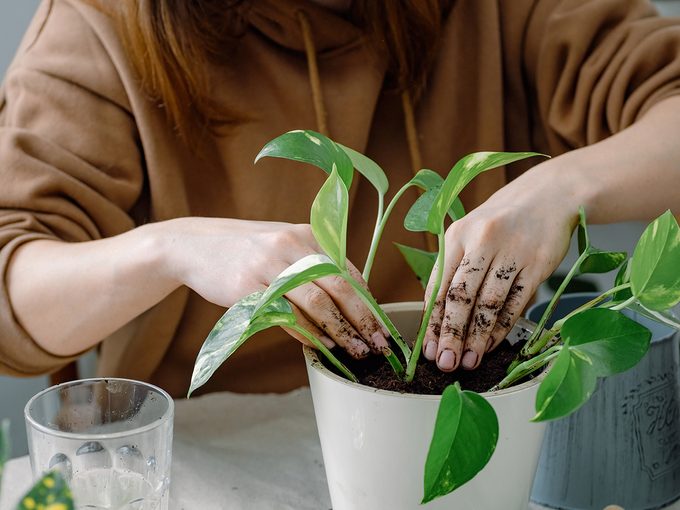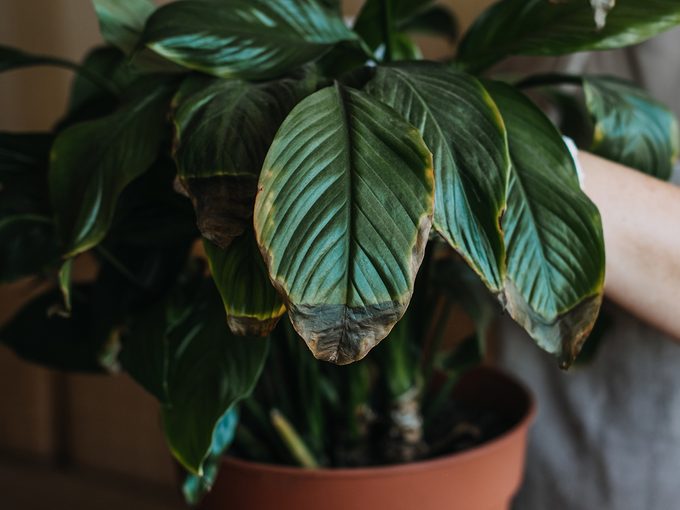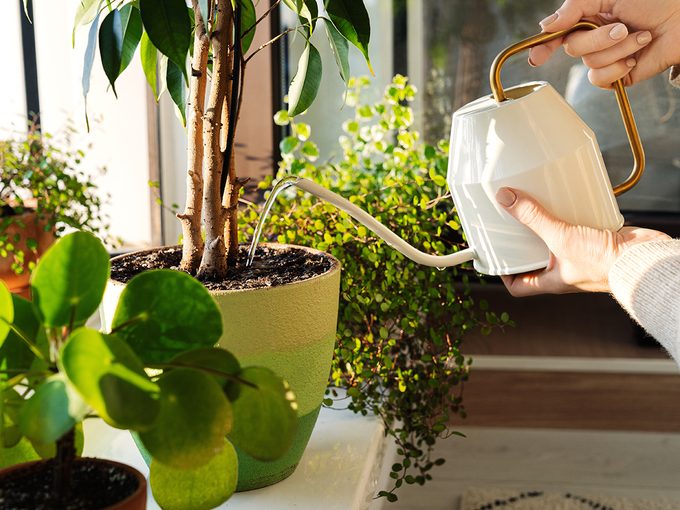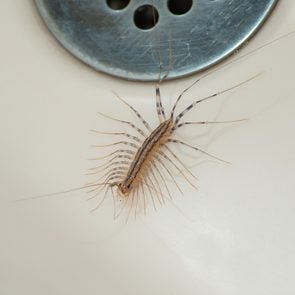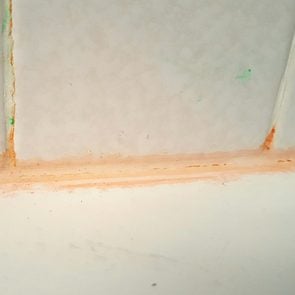Could This Be What’s Behind Your “Fruit Fly” Infestation?
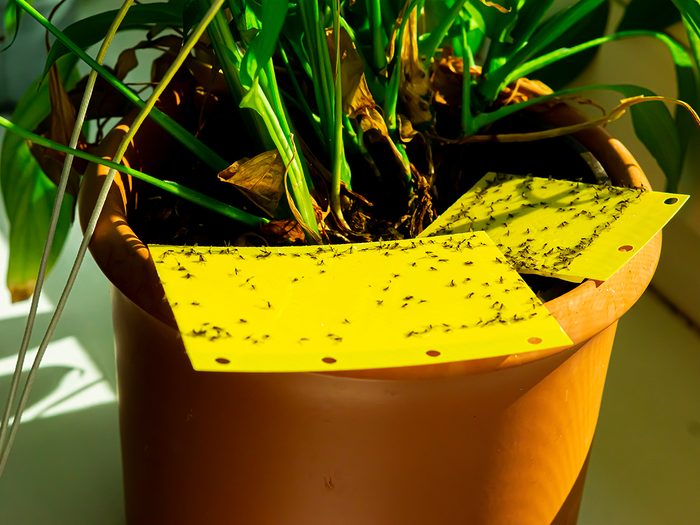
If you've been trying to rid your home of fruit flies for a while now without any luck, there's a chance you aren't dealing with fruit flies at all.
Before swatting away one of those pesky “fruit flies” that have been buzzing around your house, you might want to give it a closer inspection. Even if it’s the same size and colour of a fruit fly, pay particular attention to the body shape. If it looks more like a mosquito—and shows no interest in biting—it could be a different flying pest entirely: a fungus gnat.
To the untrained eye, fruit flies and fungus gnats look almost identical. Since it can be hard to differentiate them, Roger Gettig, Director of Horticulture at the Toronto Botanical Garden says the biggest giveaway is in where they’re found. “In general, fungus gnats are going to be near pots of plants, and fruit flies are going to be in your fruits and vegetables out in the kitchen,” he notes.
If you’re itching to get rid of these annoying and invasive critters stat, you’ve already made good progress by identifying them correctly. Next, you’ll need a bit of patience as you work through these eradication strategies that will eventually render your house fungus gnat-free. Here’s how to get rid of fungus gnats in houseplants for good.
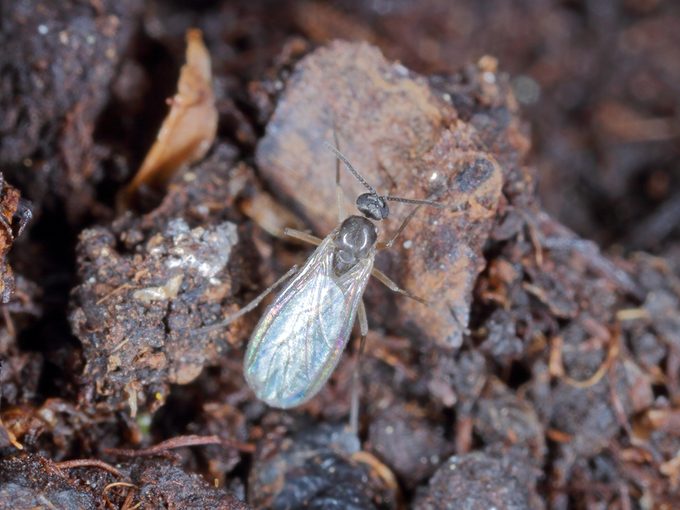
Why you’ve got a fungus gnat problem
Fungus gnats generally come from already-infested greenhouse plants, or they can attack outdoor plants and stay in the soil once you bring them inside for the winter. Some sources say they’re attracted to light and sweet scents, but Gettig says they’re primarily attracted to fungus, small roots and decaying organic matter like compost or mulch, all of which are found in over-watered houseplants. Decaying matter provides essential nutrients for hungry fungus gnat larvae, making houseplant soil an optimal breeding ground for the species.
When fungus gnats aren’t laying eggs, though, they’re primarily attracted to moisture, and that’s why you’ll sometimes find them buzzing around damp drains or even open vessels of water. Gettig says adults really only need water to survive, and a small amount at that. “They can drink standing water, even if it’s a drop on your sink,” he says.
In some cases, fungus gnats can even live and reproduce inside the pipes underneath a sink or tub. This usually happens when damp plant soil is unavailable (i.e. the plant owner has stopped over-watering it), and moist pipes—mainly those coated in food residue or other types of decaying organic matter—become the next best option.
Now that you know what they’re attracted to, let’s break down how to get rid of fungus gnats in houseplants.
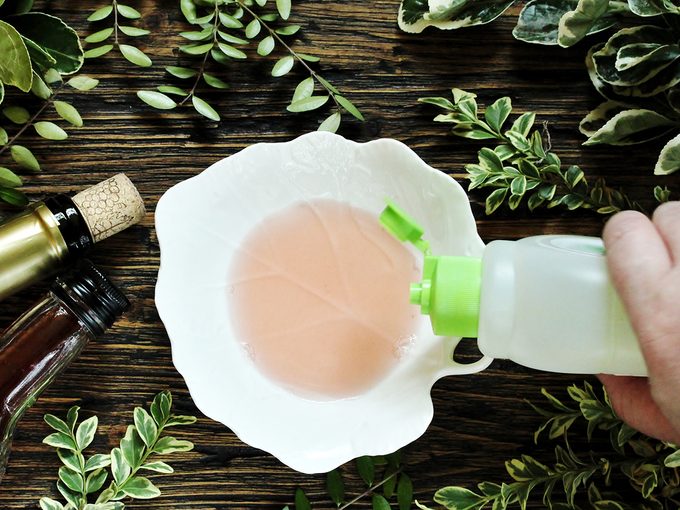
How to get rid of fungus gnats in their adult stage
Gettig says adult females can lay up to 200 eggs in their life cycle (adults live for about a week to 10 days and the species can survive indoors all year long), which means that at any given time you could have hundreds of fully-grown fungus gnats buzzing around your house. To target the adults, there are a few options.
First, Gettig says stop over-watering your plants—period. “Sometimes people just touch the surface of the pot to see if it needs water, but really you should stick your finger down about an inch.” If the soil an inch deep is still moist, your plant doesn’t need watering. This will help deter fungus gnats because the top layer of soil is usually where they lay their eggs, and if it’s dry, Gettig says they won’t go near it.
Apart from avoiding over-watering, you can also use yellow sticky traps, which are available at most garden centres and home improvement stores. Just lay them on top of your soil or adhere them to a popsicle stick and insert into the soil to trap the adults.
Homemade liquid traps are effective too, says Gettig. All you need is a small bowl, plastic wrap, apple cider vinegar, dish soap and water. Fill the bowl with apple cider vinegar, a bit of water and a couple drops of dish soap and stir gently. Cover the bowl tightly with the plastic wrap (you can use an elastic band to achieve a tighter seal) and use a fork or toothpick to poke small holes in the surface. Whether due to moisture or sweetness of the mixture, the fungus gnats will be drawn to the trap and get stuck under the seal. “Because you’ve added the soap, the surface tension is broken and they will drown,” says Gettig.
Don’t have a green thumb? These hardy plants are virtually indestructible.
How to get rid of fungus gnat larvae
The next step in learning how to get rid of fungus gnats is controlling the eggs. “Even if you killed all the adults, there still could be hundreds or thousands of eggs in your houseplants,” says Gettig. Not only do fungus gnat eggs become annoying adults, but they also evolve into root-eating larvae that could end up leaving your plants susceptible to disease, or even killing them.
While there are a number of different larvae-killing strategies you can try, Gettig recommends starting with a commercial larvicide containing Bacillus thuringiensis israelensis (Bti), which is specifically designed to kill fungus gnat and mosquito larvae. Popular brands include Mosquito Dunks (in puck form) or Mosquito Bits (in pellets).
To apply the larvicide to an infested houseplant, distill a quarter cup of the Mosquito Bits (or broken-up pieces of the Mosquito Dunks) in about four litres of water. Let the mixture soak for six hours and then use it to water your plants. Gettig says it’s best to strain the mixture before using it to ensure none of the bits end up in the soil. (Over time, the Bti will wash out of the pellets and they’ll just become another source of organic matter for the larvae to feed on.) He also advises to use the water within 24 hours, which is when the larvicide will be at peak activation.
After this first application, continue watering your plants normally for about two weeks (letting the soil dry out between waterings of course) and then reassess. How do you know if you’ve gotten all the larvae? Try the trick the use at the Toronto Botanical Garden: just bury a few small slices of potato about a half an inch deep into the soil, and then dig it up a few days later to see if you detect any larvae squirming around in the soil beneath. What you’re looking for are tiny maggot-like creatures with black heads and milky-white bodies. If you see any, you’ll have to repeat the process.
These low-light houseplants thrive in near darkness.
What to do if nothing works
If none of the recommended strategies above seem to be working, there are a few last-ditch efforts you could try. Diatomaceous earth (DE) is a powdered substance you sprinkle onto soil that dehydrates larvae on contact and eventually kills them. Gettig says DE will lose effectiveness upon contact with water though, so you’ll have to apply between waterings when the soil is driest.
Beneficial nematodes are a more costly option, but are worth considering nonetheless. Gettig describes nematodes as microscopic worm-like predators (yes, they’re a living thing), which eliminate fungus gnat larvae by actually crawling inside of them and releasing a deadly bacteria. “They’d have to be shipped to you alive,” he says, which is why they’re more expensive and potentially harder to find. That being said, you might have luck finding them at your local home improvement store depending on stock and availability.
The very last option, according to Gettig, is a systemic insecticide like Bonide, which is absorbed by an infested plant, and then either harms or deters anything that eats the treated plant’s roots or leaves. Problem is, Gettig says it’s toxic to whatever eats it, and the potential risk to pets and even humans makes this his least preferred method and absolutely out of the question on any plants you might consume, like fruits and vegetables.
Need to revive a dead houseplant? These hacks should do the trick.
What doesn’t work
A quick online search of ‘how to get rid of fungus gnats’ will turn up a range of eradication methods, making it difficult to know which to try and which to scroll past. According to Gettig, there are a few specific tricks that aren’t worth your time, starting with neem (a tree that produces medicinal oils). “It doesn’t really work for this type of insect,” Gettig says, because—similar to systemic insecticides—neem oil soaks are absorbed by the plant and only work if the larvae are eating the treated plant’s roots. “There’s so much organic matter in some of these soils that fungus gnat larvae could be not eating roots at all.”
Other purported home remedies like sprinkling cinnamon on the surface of the soil and watering your plants with diluted chamomile tea are ineffective too. “Cinnamon and chamomile tea are natural fungicides, so they could kill off a primary food source,” says Gettig. But again, fungus gnat larvae can survive on roots and other organic matter like peat and bark, so eliminating one food source really isn’t enough to eradicate the species completely.
Drowning—putting your plant in a bucket of water and letting it sit for hours hoping it drowns the larvae—doesn’t work either. Gettig says the studies he’s read show it can kill some—but not all—fungus gnat larvae, so he wouldn’t advise it. The same goes for watering your plants with a diluted hydrogen peroxide and water mixture. “After 30 seconds it’s water and oxygen anyway, so it’s just not super-effective.”
These urban gardening tips are perfect for small spaces.

How to prevent fungus gnats in the future
The best way to prevent another fungus gnat infestation down the road is to check plants thoroughly before you bring them home from a greenhouse. You should do the same with any outdoor plants you might bring inside for the winter, too. Ruffle the plant’s leaves and see if any fungus gnats fly out. If so, you’ll want to avoid taking that plant (and probably others surrounding it) home or bringing it inside.
Gettig also suggests plants from greenhouses or outdoors undergo a quarantine before introducing them to the rest of your houseplants, even if they seem to be fine. “Sometimes it takes a couple weeks before you see something emerge,” he says. Just keep the plant in a different room and monitor it for up to a month to be safe. If you suddenly see fungus gnats flying around, Gettig says to either bag it and remove it from your home or treat it using the methods above.
Now that you know how to get rid of fungus gnats, discover the eight best annual flowers for planter pots.
